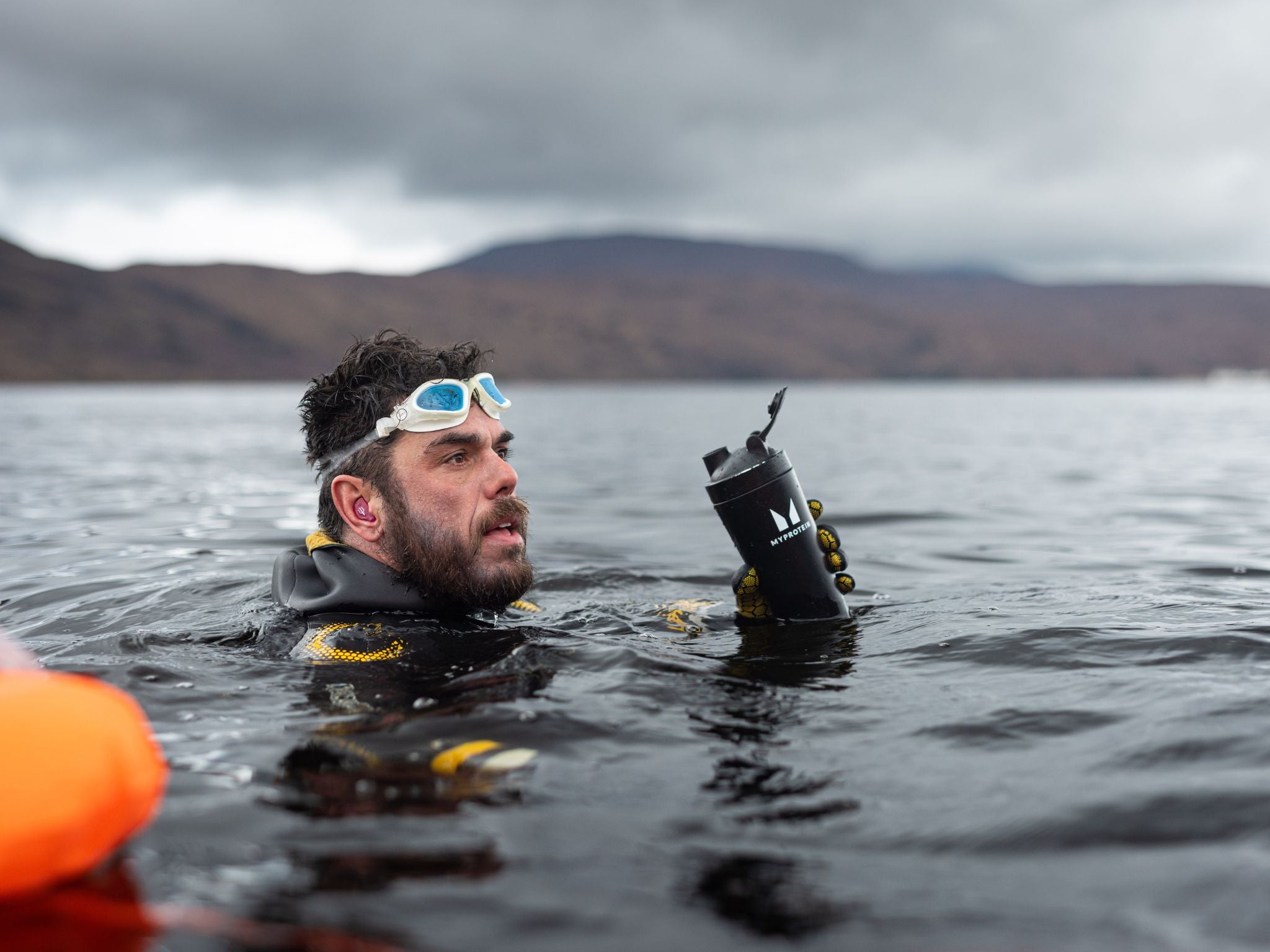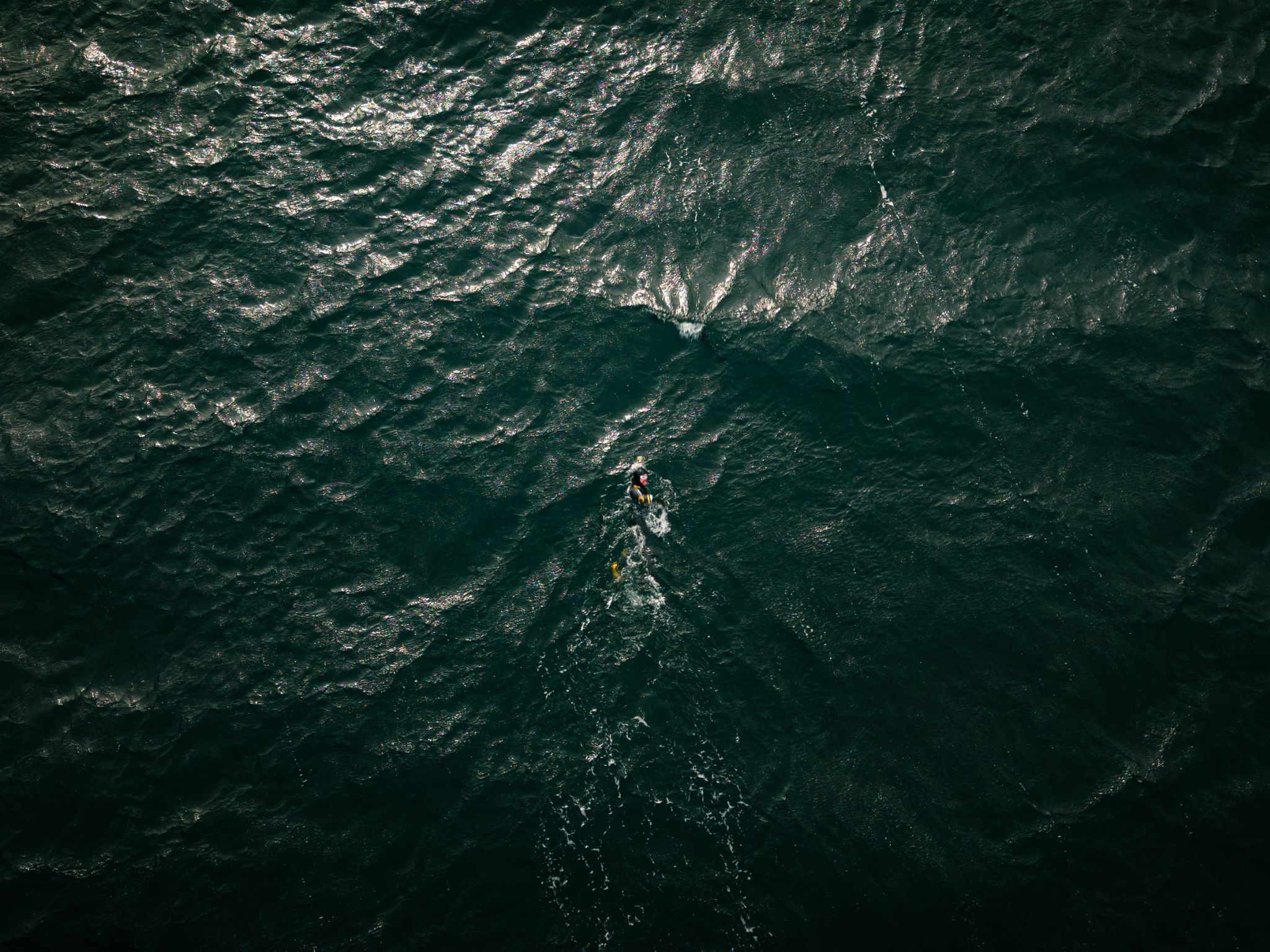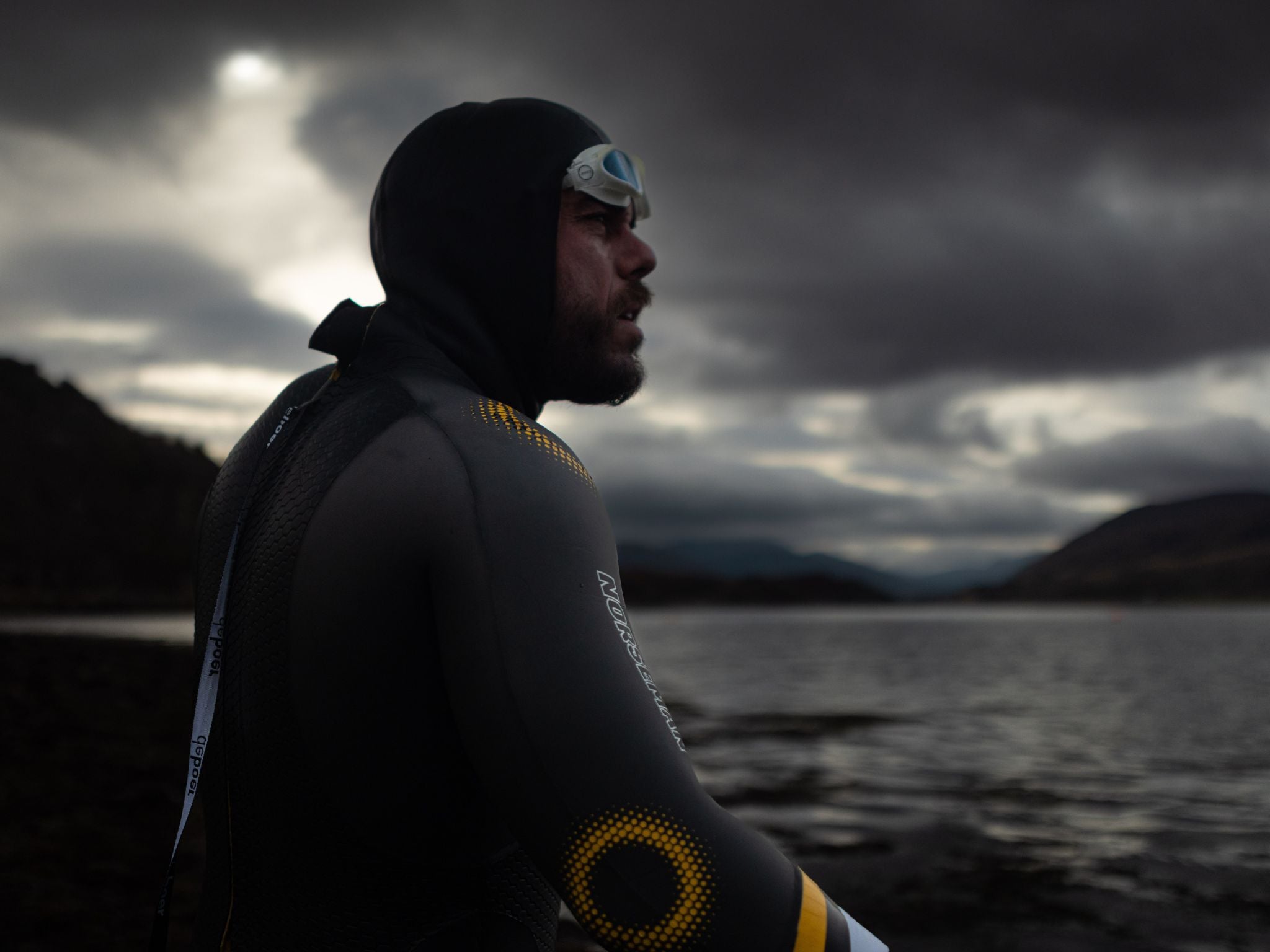
Ross Edgley is, objectively, one of the fittest people on the planet. Who else do you know with a CV that includes swimming around the entire UK, completing muscle-ups with a 20kg weight plate hanging from their waist, climbing ropes equivalent to the height of Mount Everest and finishing a triathlon with a 45kg tree attached to them?
For this reason I was apprehensive when, in a recent interview, he agreed to give me a workout challenge to try. But the two-move test he provided was surprisingly fun, suitably challenging and accessible to most fitness levels. He calls it the “Bear Crawl Battle”.
It’s simple in theory; I’ve found most of the best workouts are. You complete an ascending ladder of press-ups and bear crawls until your fatigued muscles force you to take a break.
The idea is that this is a “functional finisher”, added to the end of your workouts to increase work capacity. As Myprotein athlete Edgley puts it: “You’re training to train.”
So, after a particularly challenging Hyrox session which left my face resembling a ripe tomato, I headed to a nearby park to take the Bear Crawl Battle for a spin. Here’s how it went.
How to do Ross Edgley’s workout: The Bear Crawl Battle
- Perform one press-up, immediately followed by a one-metre bear crawl.
- Stand up and walk back to the starting position.
- Rest for roughly 10 seconds.
- Repeat this sequence, adding one press-up and one metre to the bear crawl with each new round.
- Continue until you are unable to perform all components unbroken – your muscles are too tired to complete the press-ups or bear crawls without taking a break.
Emulating Edgley’s technique in his training videos, I opted for a more animalistic version of the bear crawl, keeping my hips higher rather than the stricter “shins-and-back-parallel-to-the-ground” approach you may see elsewhere.
I found this allowed me to move faster and more freely, maintaining the intensity of the challenge. However, both techniques will work, so the one you use can be down to personal preference.
Read more: Will the run club replace the pub? Why choose when both can help fight a deeper issue?

Benefits of the Bear Crawl Battle
Edgley’s latest fitness adventure, which is currently under way, involves becoming the first swimmer to circumnavigate Iceland – a challenge he has dubbed the Great Icelandic Swim.
“Central to this Iceland swim, and also the GB swim, is the idea of work capacity: your body’s ability to perform and positively tolerate training at a given intensity or duration,” he explains.
“I think it’s so often overlooked. Most people nowadays will say, ‘Spend 45 minutes in the gym, any more and you get catabolic [a state of muscle breakdown]’. But at some point you have to do more.”
He recommends tagging the bear Crawl Battle on to the end of a workout which uses similar muscles and movement patterns, such as a chest session or push day.
“This idea of adding functional finishers at the end of your session for added volume and added sets is rooted in general physical preparedness,” says Edgley. “The Bear Crawl Battle is fun, but also effective. If you do it for a few weeks and at the end of it you’re able to tolerate more volume, you’re going to be a better athlete, irrespective of your sport.
“It’s this idea of training to train. Say I had two athletes with the same VO2 max, lactic threshold and PB for a marathon. If one had a higher work capacity and I had 12 weeks to train those two people, I could immediately flog the one with the higher work capacity like a horse. They would positively respond to high-volume workouts, double sessions, threshold work and more, whereas the other person with a lower capacity wouldn’t.”
To track your progress, record how many rounds you complete when you first try the Bear Crawl Battle. From here, repeat weekly, then see how much further you can go a couple of months down the line.
“I think it’s really nice because it’s a different metric of success,” Edgley says. “People often go to the gym and ask, ‘What are you benching?’. But it would be really nice if someone could turn around in eight weeks and go, ‘My bench is relatively stable, but my work capacity means I can now tolerate 20m in the Bear Crawl Battle’. That would be amazing.”

Trying Ross Edgley’s workout
The first round of this workout lulled me into a false sense of security; the last round brought me to my knees, both literally and figuratively.
On Edgley’s advice, I tackle it after my regular trip to the gym – a Hyrox workout including a heavy dose of running and wall balls, so my shoulders aren’t fully cooked, but they’re certainly medium rare.
The initial press-up feels fine, as does the first bear crawl. I stand, stroll back to the start and glance at my watch to keep tabs on my 10-second rest. Given I was only working for a few seconds, this feels like overkill, and by the time it passes I’m raring to go.
This theme continues for a few rounds. I’m moving fast and freely, and I start to settle into the rhythm of things. Then in round 10, something changes.
The accumulated fatigue from my workout and the prior nine rounds hits me all at once. My chest starts to burn during the press-ups, and a dull ache settles into my shoulders during the bear crawls. The fact my dog, who came along for the ride, keeps insisting I throw his ball mid-bear crawl definitely doesn’t help.
Standing up at the end of each effort feels like sweet relief, and I’m grateful for the increasingly long walk back to the start as it gives me slightly longer to rest after each round. By round 14, I’m fighting the urge to slow my walk down and cheat my way to a bit of extra rest.
And finally, on round 17, my arms give out beneath me in the final few metres of the crawl and I fall to my knees. Now, my shoulders are done.
Read more: The three short weekly workouts that can transform your fitness

Verdict: The Bear Crawl Battle
My favourite thing about this workout is its accessibility – you don’t need any equipment, and if you can support yourself in a straight arm plank you can most likely give it a go. You can also swap to kneeling press-ups if needed.
The Bear Crawl Battle challenges you to push as far as you can, providing a challenge for all-comers, and your body will self-regulate the length to suit your fitness level. Whatever round you reach, if you push yourself, the likelihood is your body will adapt positively and your work capacity will increase.
It’s also fun. When was the last time you crawled around a public park? Chances are, it’s been a while, and having given it a go I must say I rather enjoyed it, in spite of funny looks from passersby.
But, to me, that’s the beauty of Edgley’s training: it’s not normal. To do what he does, a standard gym session isn’t going to cut it, so he’s constantly pioneering new ways to push the boundaries of sports science and expand his own physical horizons.
And for that reason, alongside the others listed above, the Bear Crawl Battle gets my seal of approval.
I tried Alex Yee’s running workout and it humbled me in just 40 minutes
This is how much exercise you should be doing per day, according to experts
Pilates instructor shares three exercises for easing stiffness and improving mobility
I tried a Hyrox champ’s one-move workout – and it’s challenging but brilliant
I tried the 12-minute daily workout Helen Mirren has used for her ‘whole life’







